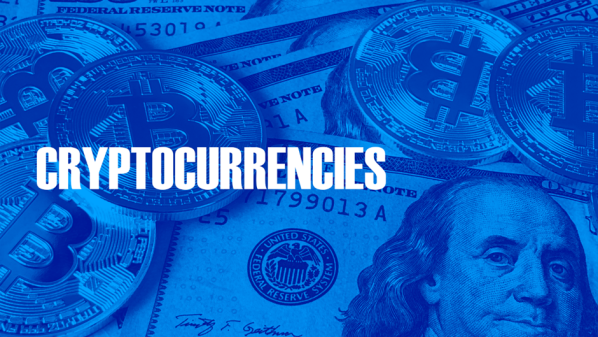
All three major U.S stock indexes recorded sharp losses this week, with U.S stocks falling for a third straight day on Friday and their biggest weekly loss since January, as inflation unexpectedly accelerated to a 40-year high in May, which forcing traders to raise expectations. Bets that the Fed will raise rates more aggressively. The Dow lost 4.58% for the week, its 10th weekly decline in the past 11 weeks. The S&P 500 fell 5.05% and the Nasdaq fell 5.6%, its ninth weekly loss in the past 10 weeks. Bank of America shares fell sharply on Friday after the inflation data, with Wells Fargo leading losses. Riskier assets underperformed the broader market, with biotech stocks tumbling.
Senior market analyst Ed Moya said the Fed will now be forced to raise rates further as inflation is not temporary and not ready to peak. Friday's route was a continuation of three months of turmoil in U.S stocks. The S&P 500 has fallen 19% from its all-time high in January, while the Nasdaq 100 has lost 28% this year.
All eyes will now turn to next week's Fed meeting and policymakers' rate statement. Traders are speculating on a streak of 50 basis points of rate hikes until September, and are increasing bets on a possible 75 basis point hike in the coming months.
Bill Adams, the chief economist at Comerica Bank, said that the longer inflation persists and the faster the Fed raises interest rates, the greater the headwind to economic growth will bring greater downside risk.

Electronic signature technology company DocuSign (DOCU.US) fell 23.12% to $67.16 on Friday. On the company's data released after the US stock market on Thursday showed that Q1 revenue was $588.7 million, a year-on-year increase of 25.49%, and the market expected $581.9 million. Howerver, the net loss expanded to $27.4 million year-on-year. Earnings per share were 0.38 USD, down 13.64% year-on-year, and below consensus EPS estimates of $0.46. In addition, the company lowered its fiscal 2023 billing revenue guidance to $2.52 billion to $2.54 billion, down from its previous forecast of $2.71 billion to $2.73 billion.
Meta Platforms (META.US)-owned Facebook is re-evaluating the company's approach to paying for news content, this could affect millions of dollars in revenue for many news organizations. In 2019, Facebook reached three-year deals with various news publishers that expire this year. Facebook's participation is seen as a step to boost the news industry at the time when ad revenue and subscriptions to traditional print media have both declined.
Britain's Competition and Markets Authority (CMA) has launched a new round of investigations into alleged anti-competitive conduct on Google's (GOOG.US) app store. The agency also said it plans to further investigate the influence of Apple (AAPL.US) and Google in the mobile browser market and Apple's restrictions on cloud gaming.
TSMC (TSM.US) revenue in May was NT$185.71 billion, a year-on-year increase of 65.3% and a month-on-month increase of 7.6%. Revenue from January to May 2022 totaled NT$849.34 billion, a year-on-year increase of 44.9%.

Inflation after slowing in April accelerated again in May, this could have a negative impact on the cryptocurrency market, which has already been affected by the Federal Reserves tightening of monetary policy. The U.S Bureau of Labor Statistics (BLS) reported Friday that the consumer price index (CPI) rose 8.6% in the 12 months through May, the largest 12-month gain since December 1981. The broader cryptocurrency market took a hit after the data was released. Bitcoin fell 4.2% in a day and Ethereum fell more than 7%.
Due to the decline of cryptocurrencies such as Bitcoin and Ethereum, cryptocurrency ETFs may become the biggest losers in the US stock ETF market. According to a summary of media data, in the ETF market with a scale of up to 6.6 trillion US dollars in 2022, the six worst-performing non-leveraged ETFs are all from the cryptocurrency sector. Among them, the Global X Blockchain ETF (NASDAQ: BKCH) with a scale of US$63 million was the ETF with the largest loss, with a staggering 64% drop during the year, while the remaining five ETFs all dropped by more than 55%.
Entering 2022, with the fading enthusiasm of investors and the tightening of monetary policy, the cryptocurrency market has not been able to reproduce the glory at the end of last year. The price of Bitcoin (the largest cryptocurrency) fell by more than 30% during the year, and Ethereum (The second-largest cryptocurrency) has also lost more than 50% in price during the year.

Gold prices rebounded in choppy trade on Friday as the focus turned to economic risks after rising U.S inflation data supported bets on aggressive interest rate hikes. U.S consumer prices accelerated in May, suggesting the Federal Reserve may continue to raise interest rates by 50 basis points until September. Gold fell to $1,824.92, its lowest since May 19, as investors Safe-haven gold quickly erased losses as it assessed the impact of the data on the economy, further boosted after U.S consumer confidence fell to an all-time low in early June.
Senior analyst Joseph Trevisani said: While the Fed's policy in at least the next two meetings will not be affected by the May or June CPI data, there is still considerable room for the market to react based on deviations from expectations.
Tai Wong an independent metals trader, said gold had been on a wild roller coaster ride, hitting a low this month after the CPI report, before rebounding sharply and rebounding again after the worst consumer confidence report on record. He also mentioned that the fate of gold next week may depend on the Fed meeting. Gold may rally despite a stronger dollar and higher U.S bond yields.

Crude oil prices rose for a seventh straight week, with tight fuel supply and demand keeping market fundamentals bullish even as accelerating U.S inflation capped gains. Despite Friday's losses, WTI crude oil rose 1.5% for the week.
OPEC+ decided last week to expand crude oil growth to 648,000 barrels per day in July and August, a 50% increase from the original plan. Still, prices rose as most OPEC+ members had little room to increase production to make up for supply cuts caused by Russia's sanctions. Global supplies of crude and petroleum products remain tight as Western sanctions hamper exports from major producer Russia, with most refineries already nearing capacity to meet growing demand driven by a post-pandemic economic recovery.
Citigroup and Barclays raised their crude oil price forecasts for 2022 and 2023 on Monday due to tighter Russian supplies. The supply gap caused by Russia's oil production cuts is between 1 million and 1.5 million barrels per day.
“Any losses in the oil market will be limited as global supply-demand tensions for crude and refined products remain a strong support factor,” said Jeffrey Halley, senior market analyst.
Analysts at JPMorgan Chase & Co. estimated that Russia's oil product exports fell by about 500,000 to 700,000 barrels a day as it now finds it more difficult to sell fuel than crude. “Unless new capacity in the Middle East comes in faster than we expect, fuel shortages will only get worse as demand for transportation fuel picks up in the northern hemisphere summer.”

Treasury yields soared and the dollar extended gains as U.S inflation hit a 40-year high in May and traders raised their forecasts for how much the Federal Reserve will raise interest rates next. The yen was largely flat on Friday after five straight days of losses, erasing intraday gains after rising as Japanese officials expressed concerns about the pace of the yen's depreciation.
The U.S dollar index rose 0.83% to 104.17, the highest level since mid-May, as investors flocked to safe-haven assets. Data released by the U.S. Labor Department on Friday showed that CPI rose 8.6% year-on-year in May, beating analysts forecast of 8.3% expected. U.S Treasury bond yields rose across the board, with short-term yields rising the most 2-year Treasury yields are currently up 24 basis points to 3.05%.
USD/JPY fell 0.7% to 133.37. Japan's Ministry of Finance, Bank of Japan issued a statement saying they were concerned about the recent rapid decline of the yen against the USD and that they would appropriately discuss the exchange rate if necessary. The dollar will see a mild correction against the yen later this year, HSBC strategists wrote in a note, citing further debate over the Bank of Japan's yield curve control policy in the second half of the year and a potentially volatile risk appetite.
OneProSpecial Analyst
Buy or sell or copy trade crypto CFDs atwww.OneProglobal.com
The foregoing is a personal opinion only and does not represent any opinion ofOneProGlobal, nor is there any guarantee of reliability, accuracy or originality in the foregoing.
Forex and CFD trading may pose a risk to your invested capital.
Before making an investment decision, investors should consider their own circumstances to assess the risks of investment products. If necessary, consult a professional investment advisor.
www.oneproglobal.com
Leave a Reply